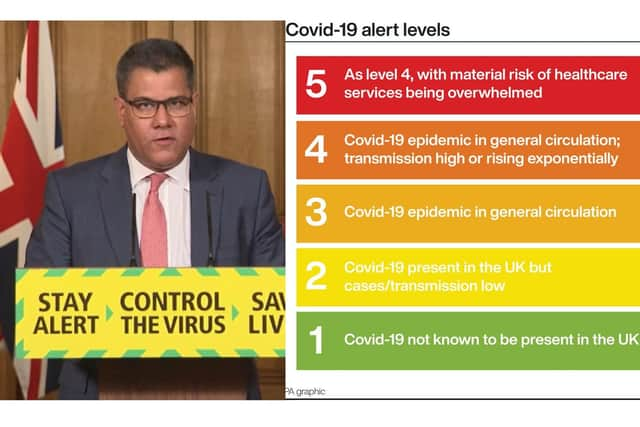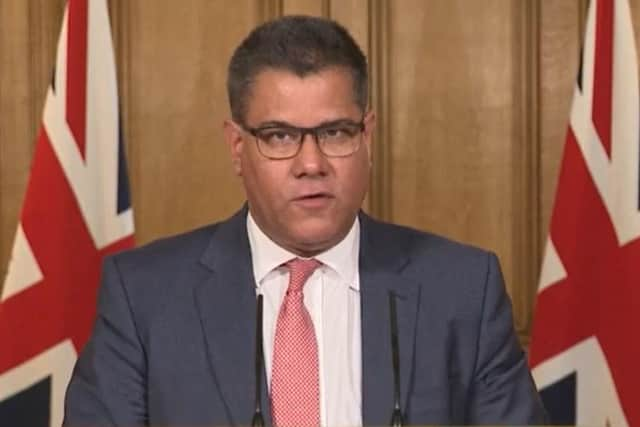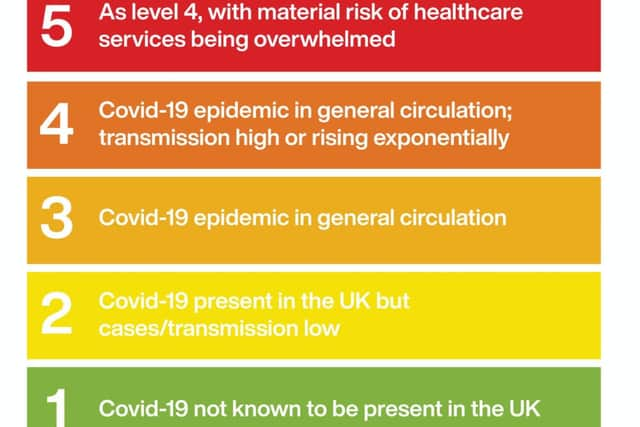Coronavirus alert level lowered to level three – this is what it means
and live on Freeview channel 276
The Government have confirmed that the UK has moved into “level three” of the coronavirus lockdown.
The change means that the “Covid-19 epidemic is in general circulation” however the transmission rate is lowering.
Advertisement
Hide AdAdvertisement
Hide AdThe Business Secretary Alok Sharma hinted on June 2 that the UK could move to the next level.


He said: “Throughout the period of lockdown we have been at level four. Thanks to you, people across the country, we have collectively helped to bring the R level down. We are now in a position to begin moving to level three, in careful steps.”
Health Secretary Matt Hancock has claimed that it is “a big moment” and shows that the “Government’s plan is working” before saying that “we are getting the country back on her feet”.
Here is how the alert system works:


What is the five level alert system?
Prime Minister Boris Johnson announced the new five level alert system in a speech to the nation on Sunday 10 March.
Advertisement
Hide AdAdvertisement
Hide AdHe said the government’s colour-coded alert system will measure the threat from coronavirus in England, with varying levels of severity.
Mr Johnson explained that the “Covid Alert Level will be determined primarily by R and the number of coronavirus cases.


“And, in turn, that Covid Alert Level will tell us how tough we have to be in our social distancing measures – the lower the level the fewer the measures. The higher the level, the tougher and stricter we will have to be.
“There will be five alert levels. Level One means the disease is no longer present in the UK and Level Five is the most critical – the kind of situation we could have had if the NHS had been overwhelmed.”
Advertisement
Hide AdAdvertisement
Hide AdWhat are the five levels?
As defined by the Government’s Covid-19 recovery strategy document, the five alert levels are:
Level 1
Covid-19 is not known to be present in the UK
Level 2
Covid-19 is present in the UK, but the number of cases and transmission is low
Level 3
A Covid-19 epidemic is in general circulation
Level 4
A Covid-19 epidemic is in general circulation; transmission is high or rising exponentially
Level 5
Advertisement
Hide AdAdvertisement
Hide AdAs level 4 and there is a material risk of healthcare services being overwhelmed
What is the current level?
The UK is currently operating in level three of the alert system.
It is a drop from level four which has been the level since March, and for the entirety of the UK lockdown.
What is level three of lockdown?
Level three of lockdown means the threat of Covid-19 in the country is “substantial”.
Advertisement
Hide AdAdvertisement
Hide AdWhile this doesn't sound too positive, it means the virus’ threat to the country has decreased somewhat, from level four’s “severe” threat.
Who determines the current level?
It is the Joint Biosecurity Centre (JBC) - an organisation ran by Tom Hurd, a counter-terrorism specialist - that will use testing to identify changes in infection rates, as well as environmental and workplace data, to advise chief medical officers.
However, it remains the government ministers job to decide whether to ease or tighten the lockdown restrictions based on this data.
Gradual easing of restrictions
Given that the alert level has been lowered, it could suggest that the Government will look to make further reduce the coronavirus lockdown restrictions.
The next round of easing is set to take place from July 4.